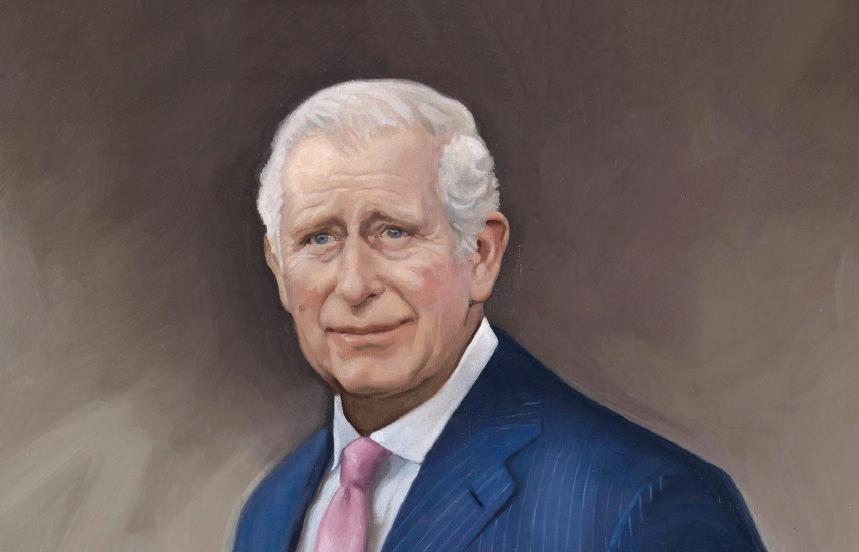
7 minute read
THE CORONATION
The first portrait of King Charles since he took the throne has been revealed.
Painted in oils by artist Alastair Barford, the image depicts His Majesty wearing a blue suit, white shirt, pink tie and pocket square with his hand resting casually in his jacket pocket Though not an official portrait, it is the first commissioned portrait of the King to be unveiled since he became monarch.
From Heir to KingKing Charles III 6th May 2023
King Charles III, formerly known as The Prince of Wales, was born in 1948 and became heir apparent on the accession of Queen Elizabeth II in 1952.
In addition to his official and ceremonial duties in the United Kingdom and overseas as The Prince of Wales, His Majesty has taken a keen and active interest in all areas of public life for decades. The King has been instrumental in establishing more than 20 charities over 40 years, including The Prince’s Trust, The Prince’s Foundation and The Prince of Wales’s Charitable Fund (PWCF).
His Majesty has worked closely with many organisations, publicly supporting a wide variety of causes relating to the environment, rural communities, the built environment, the arts, healthcare and education.
The Coronation Service
The Coronation of The King and The Queen
Consort will take place at Westminster Abbey on Saturday 6th May 2023.
The Service will be conducted by the Archbishop of Canterbury and will reflect the Monarch’s role today and look towards the future, while being rooted in longstanding traditions and pageantry. Their Majesties will arrive at Westminster Abbey in procession from Buckingham Palace, known as ‘The King’s Procession’.

After the Service, Their Majesties will return to Buckingham Palace in a larger ceremonial procession, known as ‘The Coronation Procession’. Their Majesties will be joined in this procession by other Members of the Royal Family.
At Buckingham Palace, The King and The Queen Consort, accompanied by Members of the Royal Family, will appear on the balcony to conclude the day’s ceremonial events.

Who will be going to the coronation?
The coronation is a state occasion, which means the government controls the guest list, reports the
BBC. As well as the Royal Family, those attending will include the prime minister, representatives from the Houses of Parliament, heads of state, and other royals from around the world. Westminster Abbey’s normal capacity is around 2,200 and it seems likely this will be the maximum number on this occasion.
The Coronation Concert
On Sunday 7th May 2023, a special Coronation Concert will be staged and broadcast live at Windsor Castle by the BBC. King Charles has personally commissioned new music and chosen the musical programme for the service.
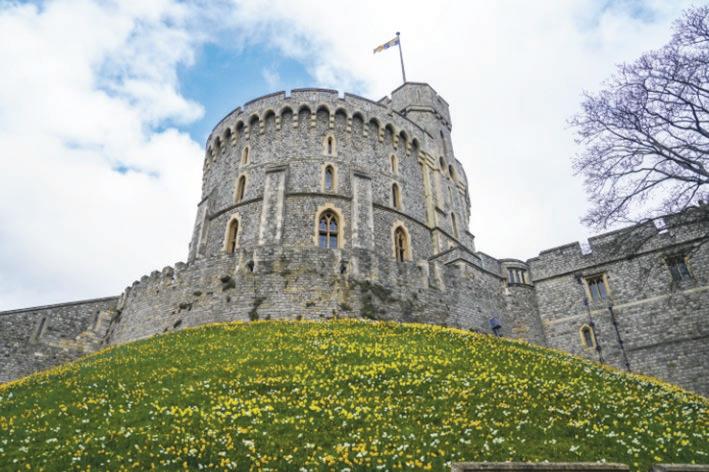

Twelve newly commissioned pieces of music will be performed, showcasing musical talent from across the United Kingdom and the Commonwealth – this will include music from the likes of Andrew Lloyd Webber. One of the liturgical sections of the ceremony will be performed in Welsh, in recognition of the King’s long-standing and deeply held relationship and affiliation with Wales. Greek Orthodox music will also feature in the service performed by the Byzantine Chant Ensemble - a request by the King as a tribute to his late father, Prince Philip. The service will be sung by the Choir of Westminster Abbey, the Choir of His Majesty’s Chapel Royal a gospel choir and others.
The Coronation Big Lunch
The Coronation Big Lunch, at which neighbours and communities are invited to share food and fun together, will take place across the country, also on Sunday 7th May 2023, in a nationwide act of celebration and friendship. From a cup of tea with a neighbour to a street party, a Coronation Big Lunch brings the celebrations to your neighbourhood and is a great way to get to know your community a little better. The Coronation Big Lunch will be overseen and organised by the Big Lunch team at the Eden Project. The Big Lunch is an idea from the Eden Project, made possible by The National Lottery, that brings millions of people together annually to boost community spirit, reduce loneliness and support charities and good causes. Her Majesty The Queen Consort has been Patron of the Big Lunch since 2013.
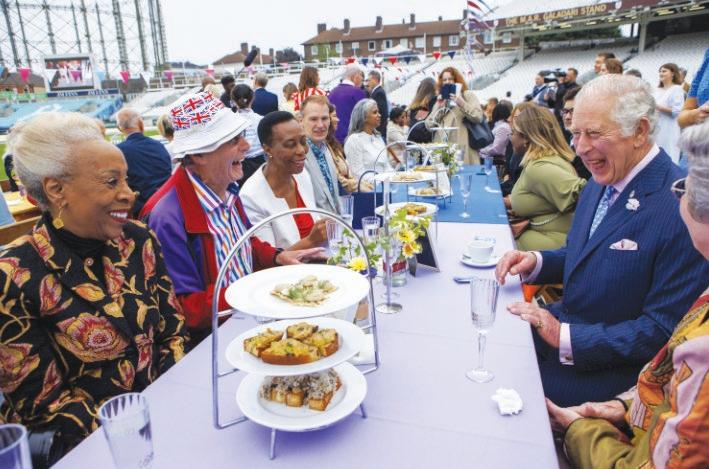
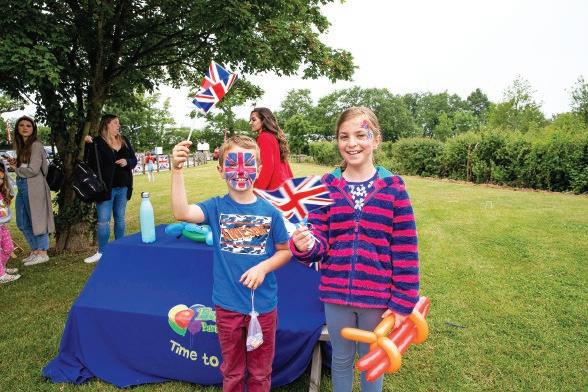
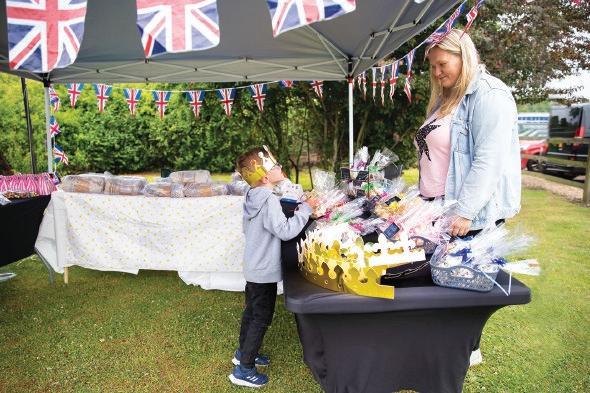
Thousands of events are expected to take place in every corner of the United Kingdom this May as people take to their streets, gardens, parks and community spaces to join the Coronation celebrations and mark this historic occasion.

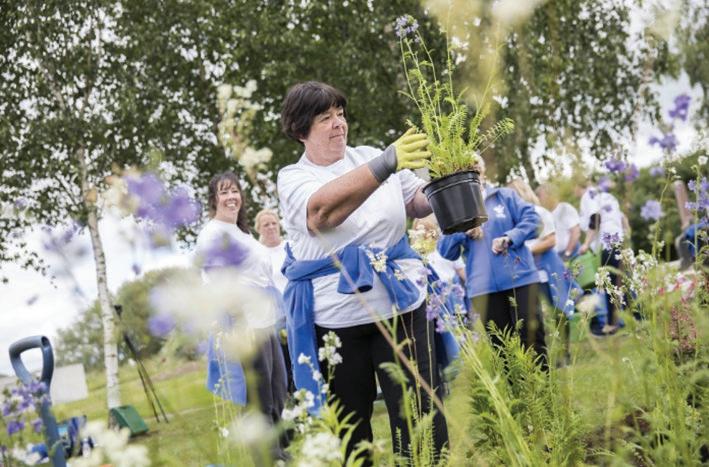
Our very own Holme Grange Craft Village invite you to a Coronation Celebration on Monday the 8th of May.
The Big Help Out
Also on Monday 8th May 2023, members of the public will be invited to take part in The Big Help Out, which will encourage people to try volunteering for themselves and join the work being undertaken to support their local areas. Monday, a bank holiday, has been set aside for volunteering. Organised by The Together Coalition and a wide range of partners such as The Scouts, the Royal Voluntary Service and faith groups from across the UK, the big help out aims to highlight the positive impact volunteering has on communities.
The palace said in tribute to the King’s public service, the big help out “will encourage people to try volunteering for themselves and join the work being undertaken to support their local areas”. The aim of the day is to use volunteering to bring communities together and create a lasting volunteering legacy from the coronation weekend.
‘’God Save the King’’
What is a coronation?
A coronation is the formal investiture of a monarch and their regal powers. It is a grand event in which the monarch is presented with royal ceremonial objects, such as the Crown Jewels. It is where the crown is physically placed on the sovereign’s head, in front of thousands of important guests, reports the Royal Collection Trust. It validates the monarch’s role as the head of the Church of England and commemorates the transfer of their title and powers.
What will happen at the coronation?
The coronation of King Charles and the Queen Consort, Camilla will take place at Westminster Abbey. The service will be conducted by the Archbishop of Canterbury. The service will reflect the monarch’s role today and look towards the future while being rooted in longstanding traditions and pageantry, Buckingham Palace has said. The King and the Queen Consort will arrive at Westminster Abbey in procession from Buckingham Palace, known as ‘the King’s Procession’. There are several stages to the service, according to the BBC:
The recognition: While standing beside the 700-year-old Coronation Chair, the monarch is presented to those gathered in the Abbey by the Archbishop of Canterbury. The congregation shouts “God Save the King!” and trumpets sound The oath: The sovereign swears to uphold the law and the Church of England
The anointing: The King’s ceremonial robe is removed and he sits in the Coronation Chair. A gold cloth is held over the chair to conceal the King from view. The Archbishop of Canterbury anoints the King’s hands, breast and head with holy oil made according to a secret recipe, but known to contain ambergris, orange flowers, roses, jasmine and cinnamon. The oil created for Charles will not contain any ingredients derived from animals. The investiture: The sovereign is presented with items including the Royal Orb, representing religious and moral authority; the Sceptre, representing power; and the Sovereign’s Sceptre, a rod of gold topped with a white enamelled dove, a symbol of justice and mercy. Finally, the Archbishop places St Edward’s Crown on the King’s head.
The enthronement and homage: The King leaves the Coronation Chair and moves to the throne. Peers kneel before the monarch to pay homage.
The Queen Consort will then be anointed in the same way and crowned.
After the service, they will return to Buckingham Palace in a larger ceremonial procession, known as ‘the Coronation Procession’. The King and Queen consort will be joined in this procession by other members of the Royal Family. To conclude the day’s ceremonial events, the King and the Queen Consort will be accompanied by members of the Royal Family and will appear on the balcony at Buckingham Palace.
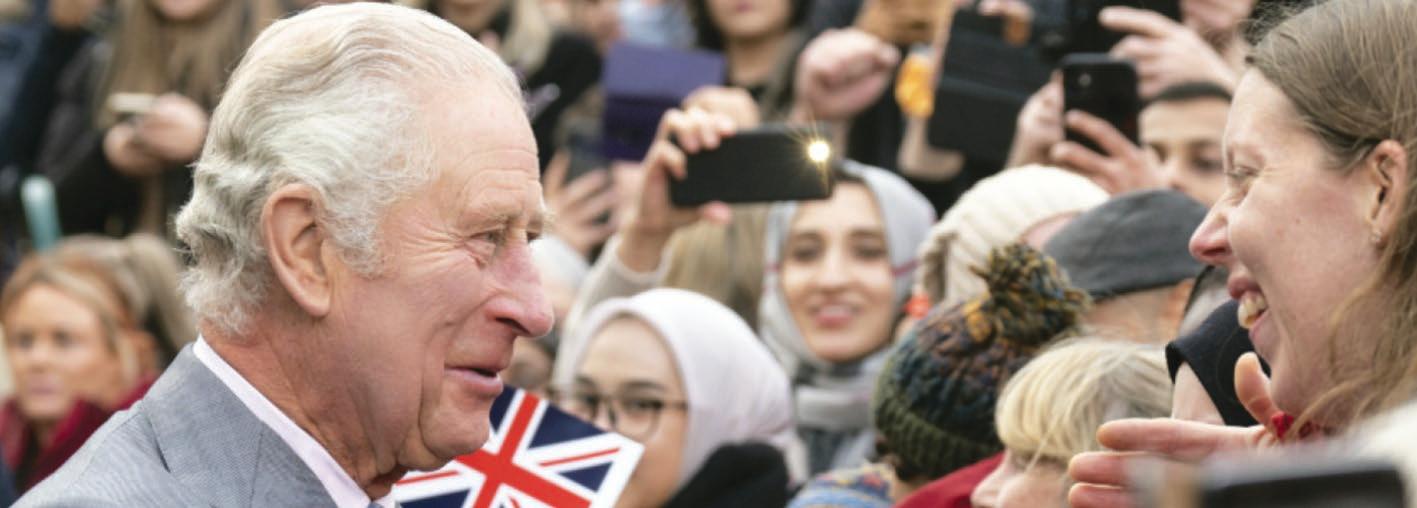
What are the Crown Jewels?
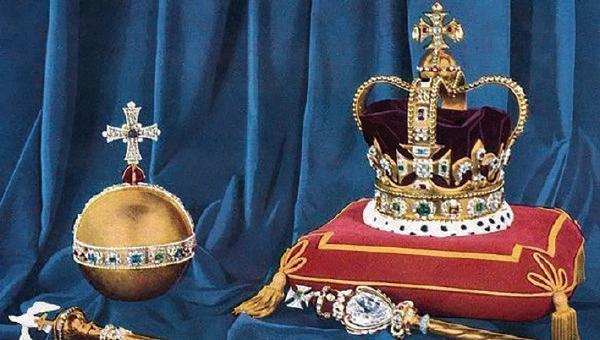
The Crown Jewels are the most famous of the nation’s treasures. They include over 100 extraordinary items including orbs, sceptres, and crowns. All are closely connected with the status and role of the monarch. The oldest of these is the 12th-century spoon used to anoint the king or queen at the coronation.
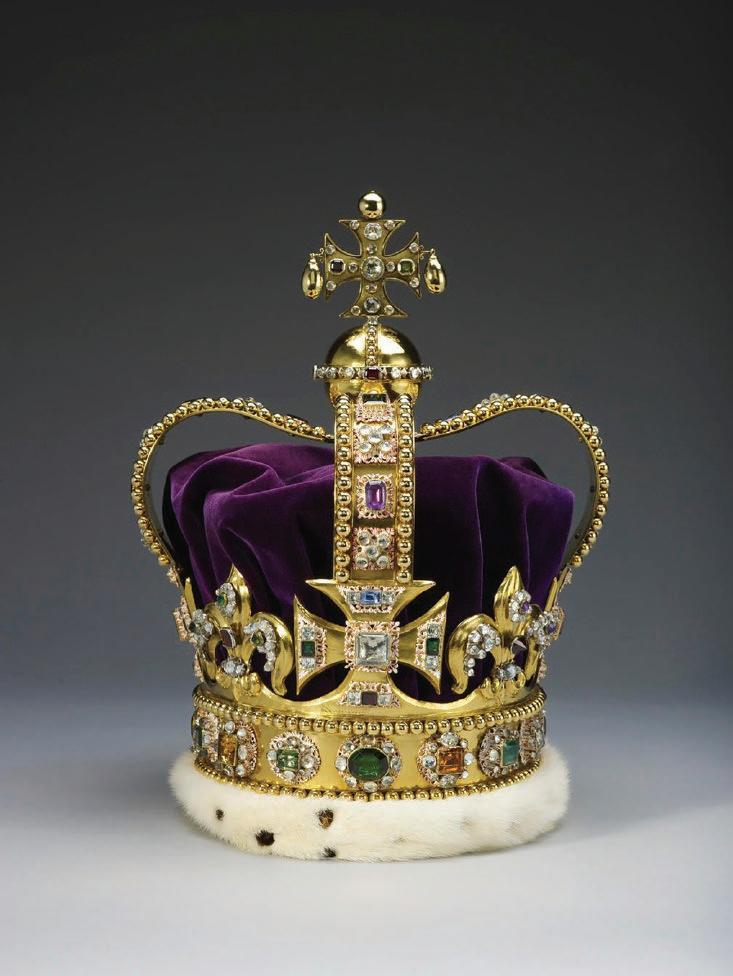

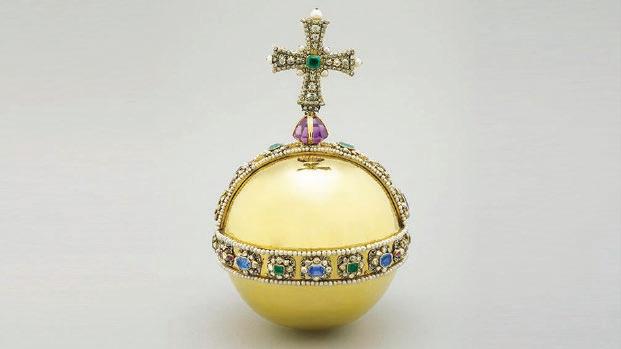
Housed at the Tower of London, the Crown Jewels are the most complete collection of royal regalia in the world. They are used at occasions such as the coronation service and the State Opening of Parliament. Part of the Royal Collection, the Crown Jewels are held in trust by the monarch for the nation.
St Edward’s Crown
The crown is composed of a solid gold frame, set with tourmalines, white and yellow topazes, rubies, amethysts, sapphires, garnet, peridot, zircons, spinel, and aquamarines, step-cut and rose-cut and mounted in enamelled gold collets, and with a velvet cap.
St Edward’s Crown is the crown used at the moment of coronation. It was made for Charles II in 1661, as a replacement for the medieval crown which had been melted down in 1649. The original was thought to date back to the eleventh-century royal saint, Edward the Confessor – the last Anglo-Saxon king of England.
The crown was commissioned from the Royal Goldsmith, Robert Vyner, in 1661. Although it is not an exact replica of the medieval design, it follows the original in having four crosses-pattée and four fleurs-de-lis, and two arches.
Sovereign’s Sceptre with Cross
The Sovereign’s Sceptre was made for the Coronation of Charles II in 1661 and has been used at every coronation since. The Sceptre includes the magnificent Cullinan I diamond, the largest colourless cut diamond in the world. In 1911 the Crown Jeweller, Garrard, mounted the diamond in the Sovereign’s Sceptre. The diamond is so large that the Sceptre had to be reinforced to take its weight.
Sovereign’s Orb
The Sovereign’s Orb is a representation of the monarch’s power. It symbolises the Christian world with its cross set on a globe. The gold Orb weighs 1.32kg and is mounted with emeralds, rubies and sapphires surrounded by diamonds and pearls. During the coronation service, the Orb is placed in the right hand of the monarch. It is then placed on the high altar before the moment of crowning.










